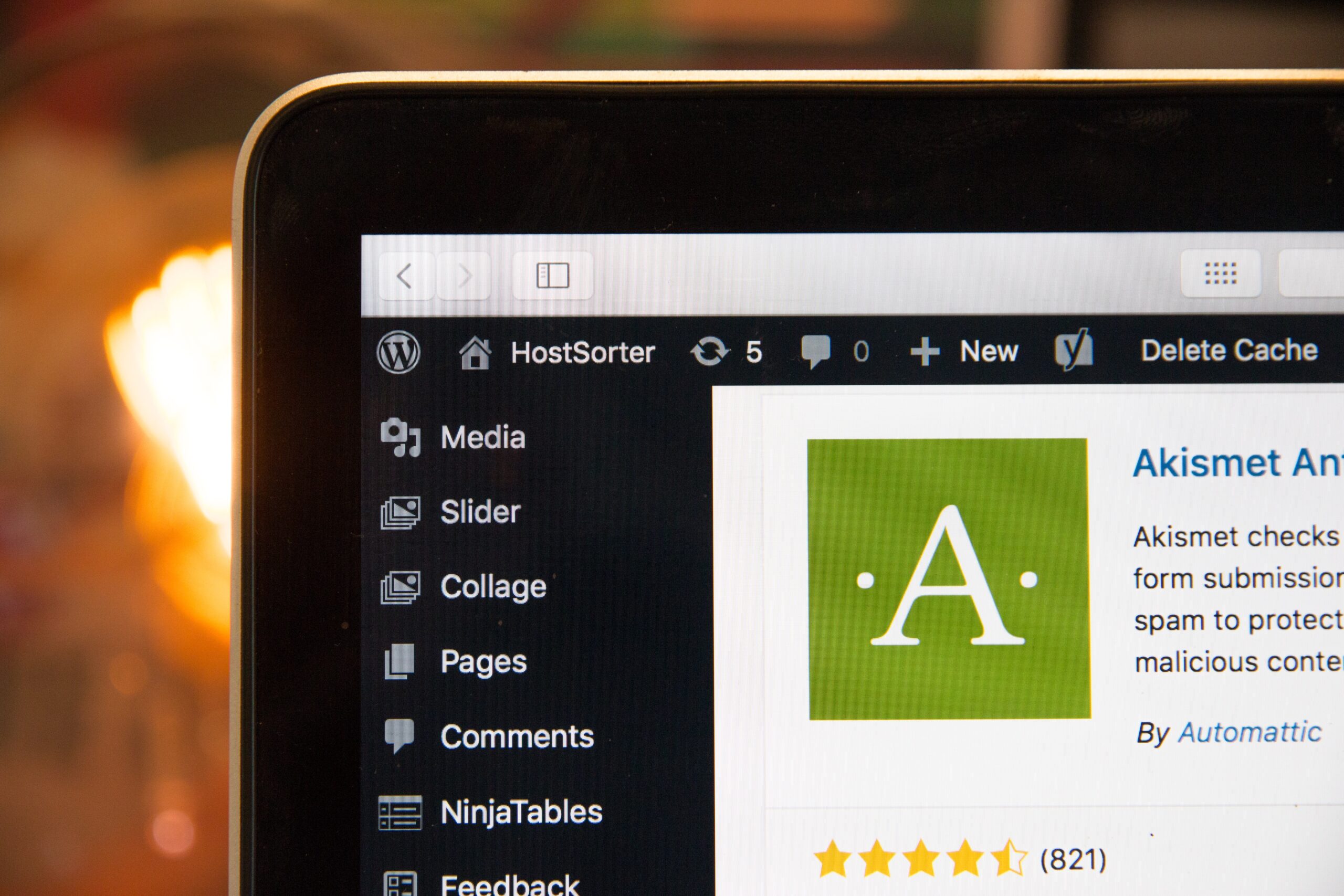WordPress is one of the most popular content management systems (CMS) on the internet today. With over 60 million websites built on its platform, it is also one of the most targeted by hackers and cybercriminals. If you don’t take the appropriate measures to secure your WordPress site, your website could be vulnerable to malware and firewall threats that could compromise your data and damage your reputation. In this article, we’ll show you how to protect your WordPress site from malware and firewall threats using various methods and techniques.
Understanding Malware and Firewall Threats
Before we dive into protecting your WordPress site, it’s essential to understand what malware and firewall threats are and how they can affect your website.
Malware, short for malicious software, is any software designed to harm your computer or network. Malware can take many forms, including viruses, worms, trojans, ransomware, and spyware. Each of these malware types infiltrates your system differently and requires different approaches to remove and prevent them from affecting your website.
Viruses are a type of malware that can replicate themselves and spread to other computers. Worms are similar to viruses but can spread without any human interaction. Trojans are disguised as legitimate software but contain malicious code that can harm your computer. Ransomware can lock you out of your computer or encrypt your files until you pay a ransom. Spyware is designed to spy on your computer activity and steal sensitive information.
A firewall is a security system that monitors and controls incoming and outgoing network traffic based on predetermined security rules. Firewalls act as a barrier between your website and the internet, filtering traffic to keep your website safe from malicious attacks.
Firewalls can protect your website in several ways. They can prevent unauthorized access to your website by blocking traffic from suspicious IP addresses. They can also detect and block common attacks like SQL injection, DDoS attacks, and brute force attacks. Additionally, firewalls can monitor your website for unusual activity and alert you to potential threats.
It’s important to note that while firewalls can provide an additional layer of security, they are not foolproof. Hackers can still find ways to bypass firewalls and infiltrate your website. Therefore, it’s crucial to implement other security measures, such as keeping your software up to date, using strong passwords, and regularly backing up your website.
Securing Your WordPress Site
Securing your WordPress site is crucial in protecting your site and data. With the increasing number of cyber attacks and hackers targeting websites, it is essential to take necessary steps to secure your WordPress site.
Below are some key steps you can take to secure your WordPress site:
Keep Your WordPress Installation Updated
One of the easiest and most effective ways to secure your WordPress site is to keep your installation up-to-date. WordPress frequently releases security patches and fixes to address vulnerabilities and known exploits. By regularly updating your WordPress installation, themes, and plugins, you ensure that you have the latest security patches and fixes installed.
When updating your WordPress installation, make sure to take a backup of your website. This will help you restore your website in case of any issues or conflicts that may arise during the update process.
Choose Secure Themes and Plugins
The choice of themes and plugins can make or break your website’s security. While there are thousands of free and paid themes and plugins available, not all of them are secure and reliable. Install only secure and trusted themes and plugins from reputable sources to minimize the risk of vulnerabilities and potential exploits.
Before installing any theme or plugin, read the reviews and ratings to ensure that it is safe and reliable. Also, make sure to update your themes and plugins regularly to keep them secure.
Implement Strong Password Policies
Weak passwords are easy targets for hackers and cybercriminals. Using strong passwords is one of the simplest yet most effective ways to secure your WordPress site. Use passwords that include a mix of uppercase and lowercase letters, numbers, and symbols. Avoid using common words, phrases, or personal information that can be easily guessed or obtained.
Consider implementing two-factor authentication for added security. Two-factor authentication requires users to provide an additional piece of information, such as a code sent to their mobile device, to log in to their account.
Limit User Access and Permissions
Limiting user access and permissions to your website is crucial in minimizing the risk of internal attacks. Only grant access and permissions to trusted users and roles, and revoke access for users who no longer need it. Regularly review your user accounts and remove any inactive or unnecessary accounts.
Additionally, consider implementing a password policy for your users to ensure that they are using strong passwords. Educate your users on the importance of website security and the role they play in keeping the website secure.
By following these steps, you can significantly reduce the risk of cyber attacks and keep your WordPress site secure.
Implementing Security Plugins
WordPress security plugins can add an additional layer of security to your website. As the popularity of WordPress continues to grow, website security is becoming increasingly important. Hackers and malicious actors are constantly looking for vulnerabilities to exploit, and implementing a security plugin can help protect your site from these threats.
Below are some popular security plugins that can help protect your WordPress site from malware and firewall threats:
- Wordfence Security: Wordfence Security is a comprehensive security plugin that offers a range of features, including malware scanning, firewall protection, and login security.
- All In One WP Security & Firewall: All In One WP Security & Firewall is a user-friendly security plugin that offers a range of security features, including firewall protection, user account security, and database security.
- iThemes Security: iThemes Security is a popular security plugin that offers a range of features, including malware scanning, brute force protection, and two-factor authentication.
Configuring Security Plugins for Optimal Protection
After installing a security plugin, it’s important to configure it according to your website’s specific requirements and security needs. Some common configurations include setting up firewalls, enabling two-factor authentication, and scanning your website for vulnerabilities.
Firewalls are an essential component of website security, as they can block malicious traffic and prevent hackers from accessing your site. Two-factor authentication adds an extra layer of security by requiring users to provide a second form of identification, such as a security code or fingerprint, in addition to their password. Vulnerability scanning can help identify potential security weaknesses in your site, allowing you to address them before they can be exploited.
Monitoring and Scanning Your Site for Threats
Monitoring and regularly scanning your WordPress site for malware and firewall threats can proactively alert you of potential vulnerabilities and attacks. Use a security plugin to run regular malware scans, and set up alerts to notify you when suspicious activity is detected. It’s also important to keep your security plugin and WordPress core files up to date, as updates often include security patches and bug fixes.
By implementing a security plugin and taking proactive measures to protect your site, you can help ensure the safety and security of your website and its users.
Setting Up a Web Application Firewall (WAF)
In addition to security plugins, setting up a web application firewall (WAF) can also provide an additional layer of security to your WordPress site. A WAF is a type of firewall that analyzes incoming web traffic to filter out malicious requests and prevent unauthorized access to your website’s data and content.
When setting up a WAF, it’s important to understand what it is and how it can help protect your site. A WAF is designed to protect web applications from attacks by filtering and monitoring HTTP traffic between a web application and the internet. It can help protect against common web application attacks such as SQL injection, cross-site scripting (XSS), and more.
By using a WAF, you can prevent hackers and cybercriminals from discovering vulnerabilities and exploits in your website’s code. It filters out malicious web traffic before it reaches your website, which can help minimize the impact of an attack.
Benefits of Using a WAF
- Prevents hackers and cybercriminals from discovering vulnerabilities and exploits in your website’s code
- Filters out malicious web traffic before it reaches your website
- Helps protect your site from SQL injection, cross-site scripting (XSS), and other common web application exploits
- Provides an additional layer of security to your WordPress site
- Can help improve site performance by reducing the amount of unwanted traffic
When it comes to choosing the right WAF for your site, several solutions are available, each with its own set of features and support services. Consider factors like your website’s size, traffic volume, and budget when choosing the right WAF for your site. Some popular WAF services include Cloudflare, Sucuri, and Incapsula.
Once you’ve chosen a WAF, it’s important to configure it properly to provide maximum security for your WordPress site. This includes configuring it to provide the appropriate level of protection for your website, monitoring it for alerts, and regularly updating any security settings and configurations.
Configuring your WAF for maximum security can be a complex process, but it’s worth the effort to ensure that your site is protected against attacks. Depending on the WAF solution you choose, you may need to configure settings such as IP blocking, rate limiting, and content filtering. It’s also important to monitor your WAF for alerts and regularly update any security settings and configurations to stay ahead of potential threats.
Furthermore, setting up a web application firewall (WAF) can provide an additional layer of security to your WordPress site. By filtering out malicious web traffic and preventing unauthorized access to your website’s data and content, a WAF can help protect against common web application attacks and improve site performance. When choosing a WAF, consider factors like your website’s size, traffic volume, and budget, and be sure to configure it properly to provide maximum security for your site.
WP Monitoring WordPress Security
The ever-increasing popularity of WordPress as a content management system makes it a prime target for hackers and cybercriminals. Taking appropriate measures to safeguard your website against malware and firewall threats is essential to protect your data, maintain your online reputation, and ensure the smooth functioning of your site. By incorporating best practices such as regular updates, choosing secure themes and plugins, implementing strong passwords, limiting user access, and employing security plugins and WAF, you can fortify your WordPress site against potential attacks.
To further enhance your understanding and take advantage of these security measures, we encourage you to book a demo for our WP Monitoring security solutions. This demo will provide you with valuable insights into the various features, techniques, and tools available to protect your WordPress site effectively. Don’t leave your website’s security to chance — book your WP Monitoring demo today and take a proactive approach to securing your online presence.





